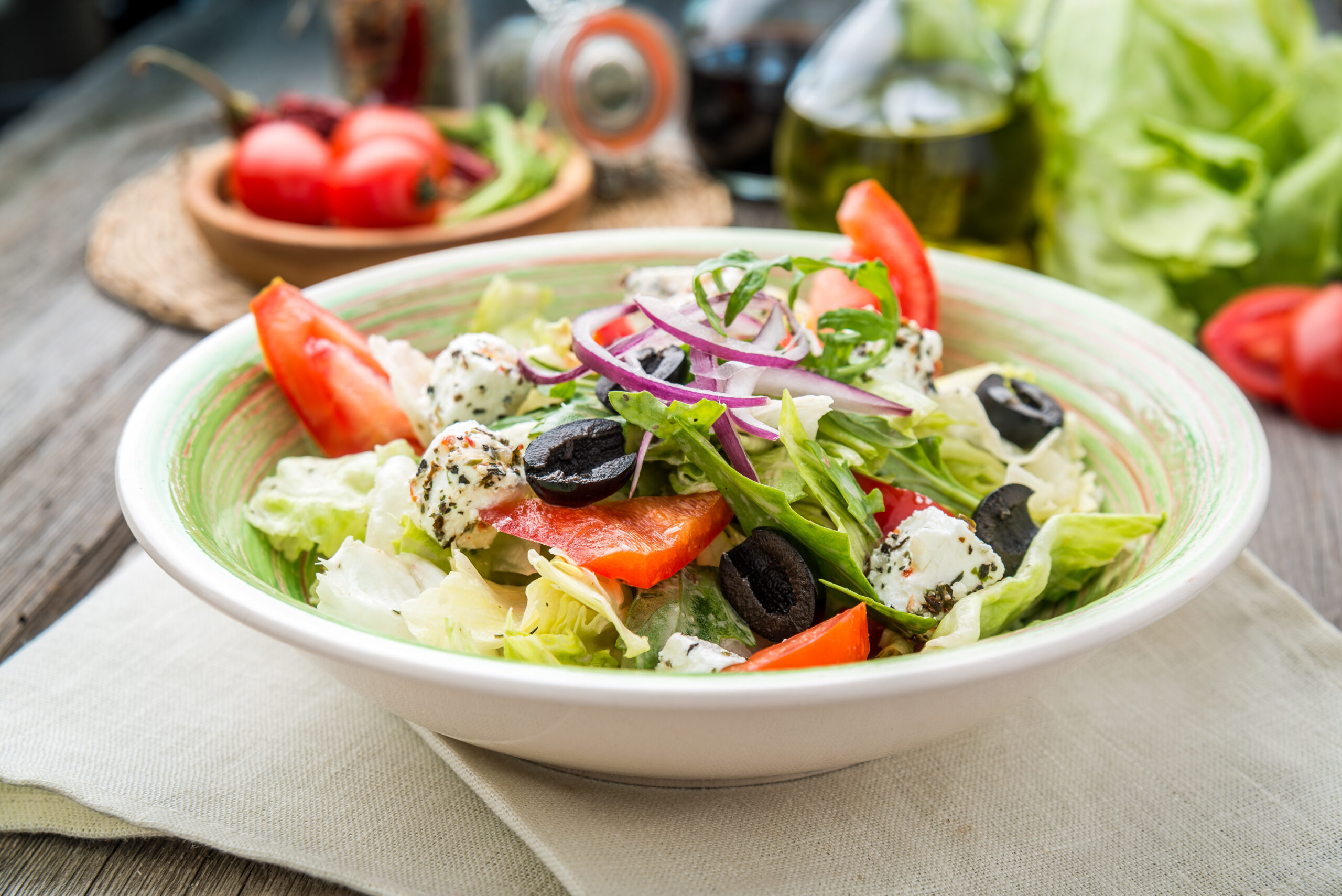Greek salad, also known as Horiatiki, is a vibrant and refreshing dish that encapsulates the essence of Mediterranean cuisine. Packed with fresh vegetables, rich flavors, and healthy fats, this salad is not just a side dish but a wholesome meal that can be enjoyed year-round. With its roots deeply embedded in the traditions of Greece, creating an authentic Greek salad at home allows you to savor the delightful tastes of the Mediterranean while reaping the numerous health benefits these ingredients offer. In this article, we’ll explore the key components of a traditional Greek salad and provide a straightforward recipe that highlights the freshness of each ingredient.
Crafting the Perfect Greek Salad with Fresh Ingredients
To create an authentic Greek salad, the quality and freshness of the ingredients play a pivotal role. When selecting produce, opt for seasonal vegetables that burst with flavor. The classic combination of cucumbers, tomatoes, red onions, and bell peppers sets the foundation for this salad. Each ingredient contributes its unique texture and taste, making every bite a delightful experience.
Start with ripe, juicy tomatoes. Varieties like heirloom or vine-ripened tomatoes offer a sweetness that balances the salad wonderfully. Next, choose crisp cucumbers, preferably the seedless English variety or Persian cucumbers, which add a refreshing crunch. Red onions provide a slight bite and vibrant color, while bell peppers, either green or red, lend a hint of sweetness and more crunch.
In addition to fresh vegetables, Kalamata olives are a must-have for their briny flavor, which complements the other ingredients beautifully. The final touch is the feta cheese, a staple in Greek cuisine. Look for high-quality feta, ideally made from sheep’s milk, as it has a creamier texture and a more robust flavor.
Dress your salad simply with extra virgin olive oil, a staple of Greek cooking. This not only enhances the flavors of the salad but also adds a healthy dose of monounsaturated fats, which are beneficial for heart health. A splash of red wine vinegar or a squeeze of fresh lemon juice can also elevate the taste, providing a subtle tanginess that rounds out the dish.
Understanding the Essential Components of Authentic Greek Salad
To truly appreciate an authentic Greek salad, it’s important to understand the significance of each component. The simplicity of the dish lies in its ability to celebrate fresh, high-quality ingredients without the need for excessive seasoning or complicated preparation.
Cucumbers serve not only as a refreshing element but also as a source of hydration, making the salad especially appealing during warm weather. Their crispness adds a delightful texture that contrasts with softer ingredients like tomatoes and feta. Tomatoes, rich in vitamins A and C, are the star of the show, providing both sweetness and acidity. The vibrant red color also signals their high antioxidant content, which is beneficial for overall health.
Kalamata olives add depth, offering a briny flavor that enhances the overall profile of the salad. Their healthy fat content contributes to satiety, making this salad a fulfilling meal option. Feta cheese is crucial; it adds creaminess and a tangy flavor that ties the salad together. Additionally, it provides protein and calcium, making the dish not only delicious but also nutritious.
Finally, extra virgin olive oil is more than just a dressing; it is a key ingredient that brings all the flavors together. Its health benefits, including anti-inflammatory properties and heart health support, make it an essential part of this Mediterranean dish. The use of quality olive oil is a hallmark of Greek cuisine, reflecting the region’s agricultural traditions.
Balancing Flavors and Textures in Greek Salad

Creating a balanced Greek salad involves more than just combining the ingredients; it’s about achieving harmony in flavors and textures. The interplay of sweet, salty, tangy, and earthy notes creates a complex yet delightful experience with each forkful. The crunchiness of the cucumbers and bell peppers pairs beautifully with the softness of the feta, while the juicy tomatoes burst with flavor, creating a refreshing contrast.
When assembling your salad, consider the proportions of each ingredient. A good rule of thumb is to use equal parts cucumbers and tomatoes, with a smaller amount of red onions and bell peppers to prevent them from overpowering the dish. The feta should be crumbled generously over the top, allowing its creamy texture to meld with the other ingredients without overwhelming them.
Dressing the salad is an art in itself. Drizzle extra virgin olive oil over the salad generously, ensuring that each ingredient is lightly coated. Follow this with a sprinkle of salt and black pepper to enhance the flavors without masking them. A splash of red wine vinegar or fresh lemon juice adds the necessary acidity, cutting through the richness of the feta and olive oil. Toss the salad gently, just enough to combine the ingredients, preserving the integrity of each component.
To finish, let the salad sit for a few minutes before serving. This resting time allows the flavors to meld, creating a more cohesive taste profile. Enjoy your Greek salad as a light lunch, a side dish for grilled meats, or even as a refreshing starter at dinner. The beauty of this dish lies in its versatility and its ability to transport you to the sun-kissed shores of Greece with every bite.
In conclusion, crafting an authentic Greek salad is a straightforward process that highlights the beauty of fresh ingredients. By focusing on quality vegetables, creamy feta, and a simple dressing of olive oil and vinegar, you can create a healthy and satisfying meal that embodies the spirit of Mediterranean cuisine. Whether enjoyed on its own or as part of a larger feast, the Greek salad remains a timeless favorite that celebrates the flavors of the earth and the sea.

Leave a Reply